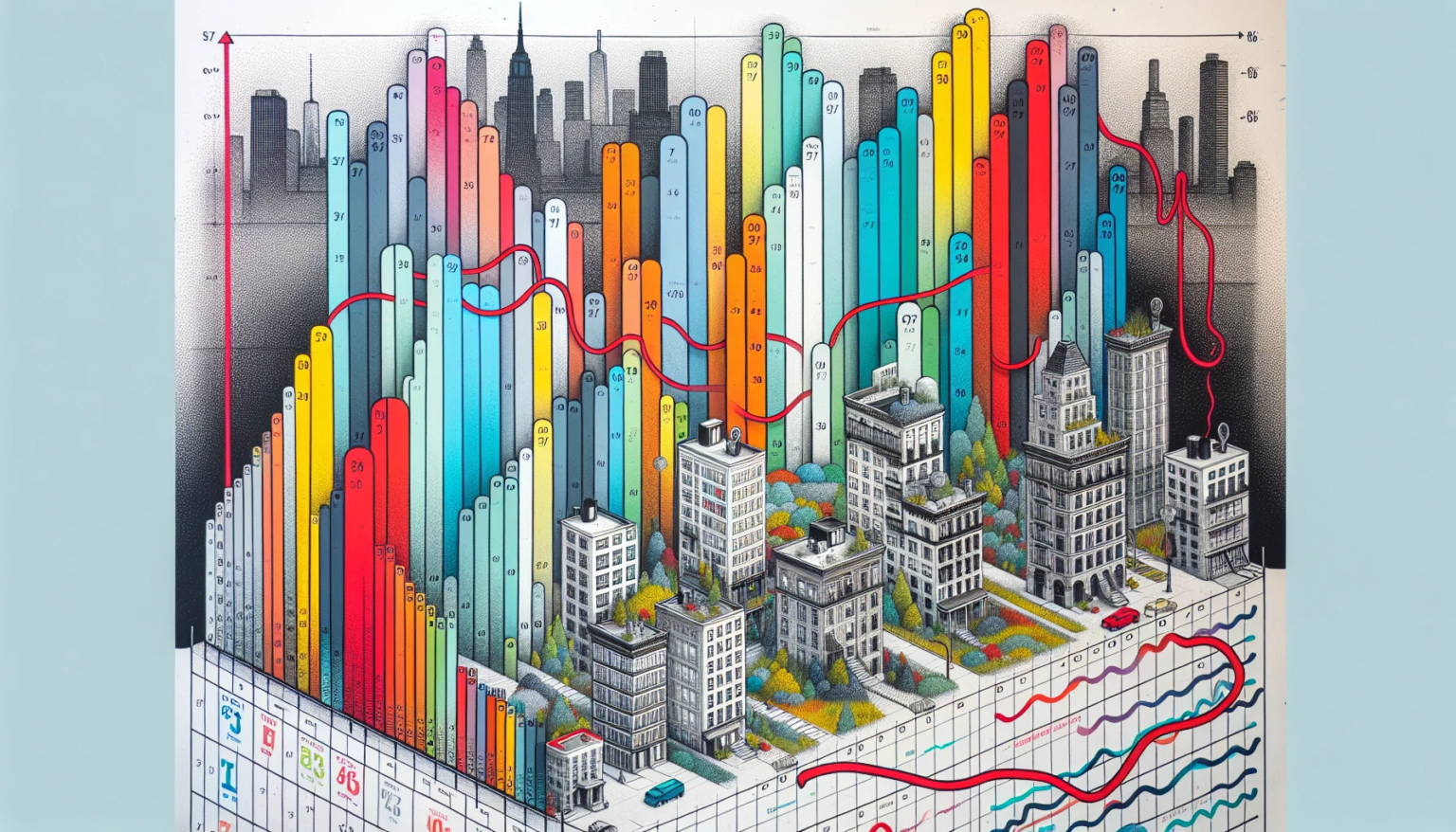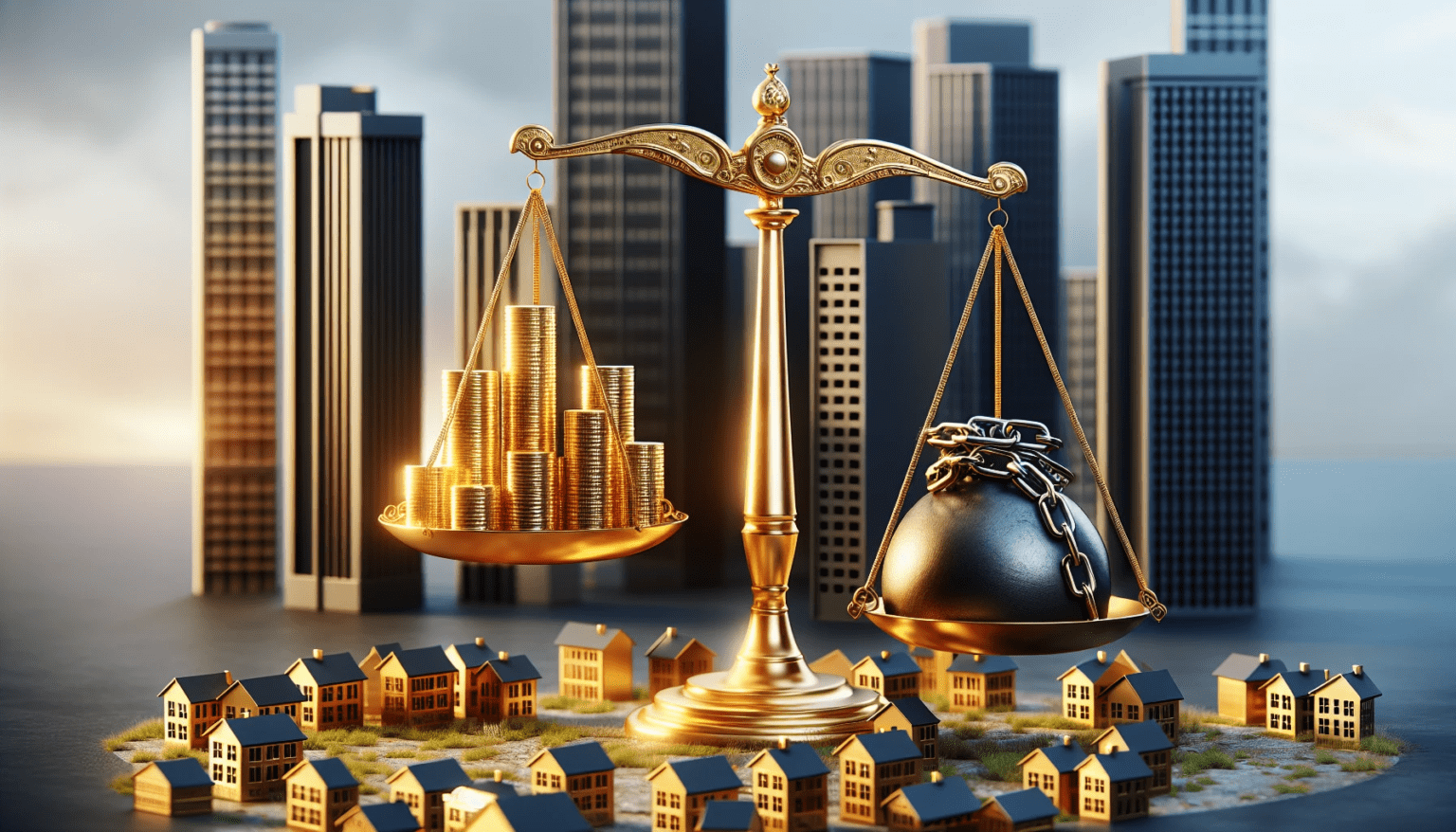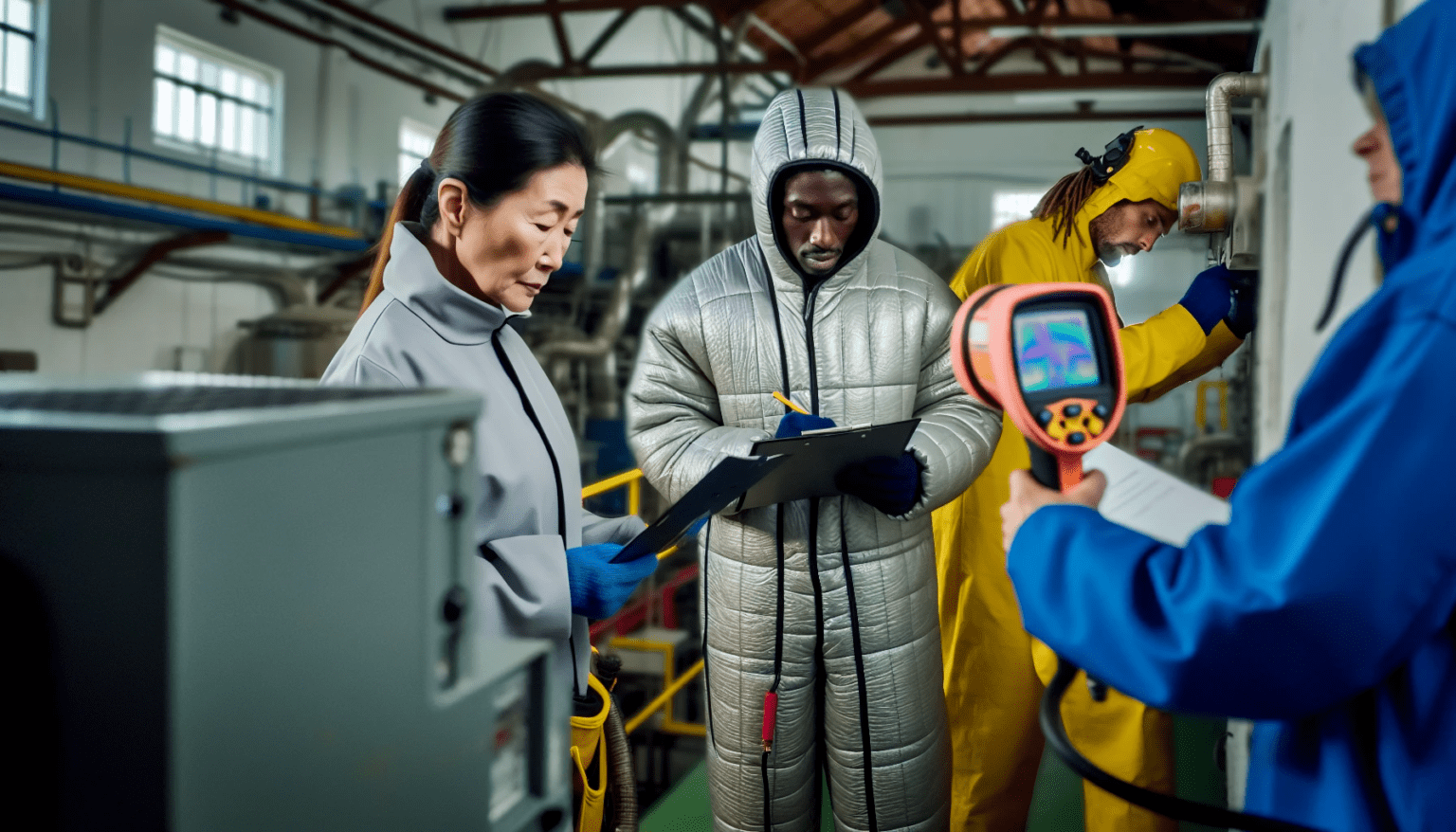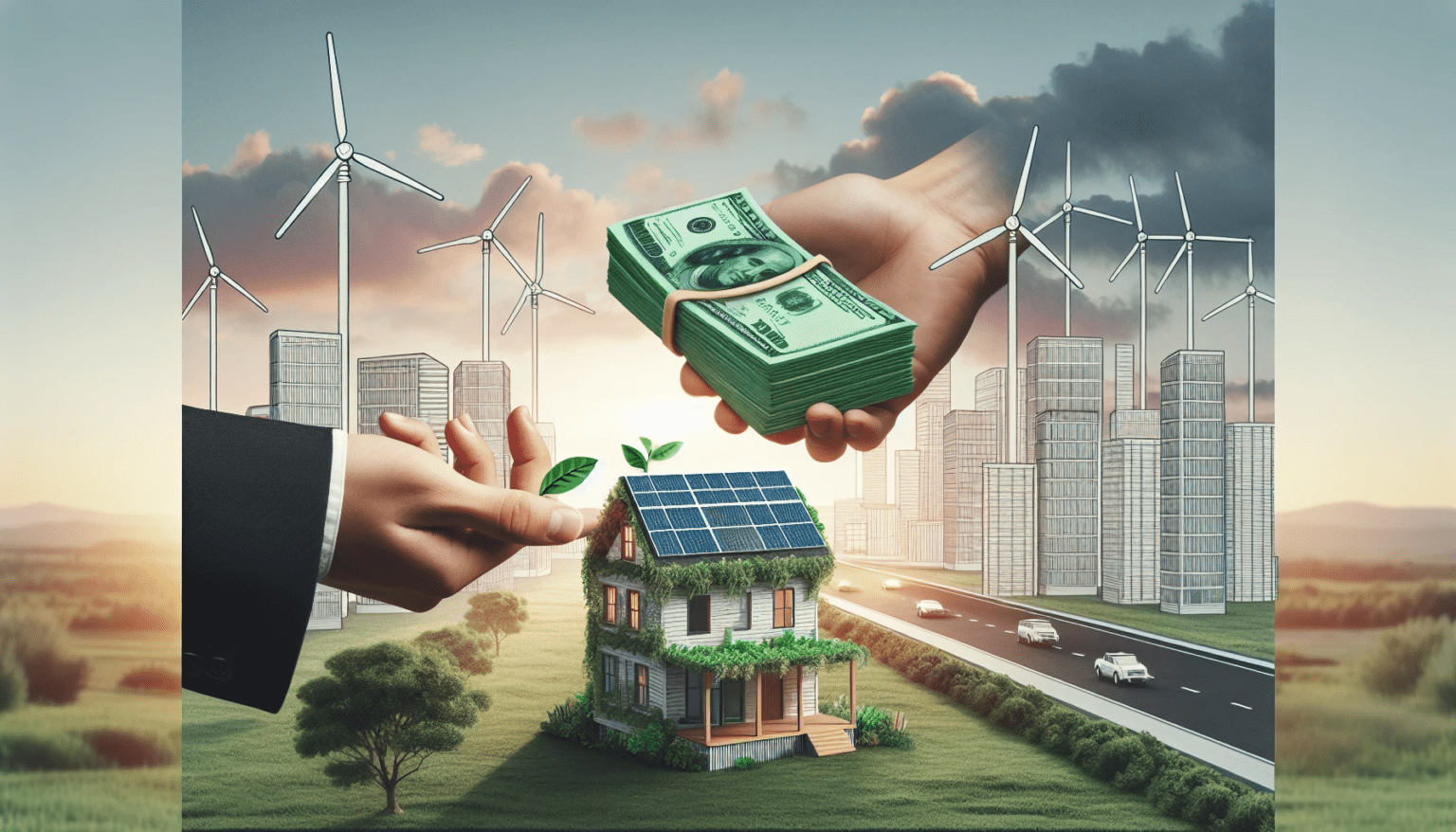New York City, NY: As the world grapples with the challenges posed by climate change, reducing carbon emissions has become a top priority. In New York City, a groundbreaking legislation called Local Law 97 is setting the stage for a greener and more sustainable future by establishing stringent greenhouse gas emissions limits for buildings. Are you ready to learn how this law impacts property stakeholders and discover the steps necessary to achieve compliance? Let’s embark on this insightful journey together.
- Key Takeways
- Understanding Local Law 97: A Primer for Property Stakeholders
- The Scope and Impact of Local Law 97 on NYC Properties
- Financial Incentives and Penalties: Navigating the Economic Landscape
- Pathways to Compliance: Steps to Meet Local Law 97 Requirements
- What is a Green Loan?
- Summary
- Frequently Asked Questions
Key Takeways
- Local Law 97 requires NYC building owners to meet climate objectives and understand regulations & penalties for non-compliance.
- Strategies for reducing carbon emissions include energy efficiency measures, retrofitting, shift to cleaner energy sources & electrification.
- Financial incentives and green loans are available. Understanding civil penalties is essential in order to comply with Local Law 97 requirements.
Understanding Local Law 97: A Primer for Property Stakeholders

Local Law 97 is a substantial legislation implementing stringent greenhouse gas emissions limits for NYC buildings that exceed 25,000 square feet. As the most ambitious building emissions legislation enacted by any city globally, it affects a broad spectrum of structures, including affordable housing and commercial properties. The law targets net-zero emissions by 2050, proposing a reduction of citywide emissions by 40% by 2030 and 80% by 2050, compared to 2006 baseline levels.
It is important for building owners to note that the emissions limits established by Local Law 97, commence in 2024 and become more stringent in 2030. Significant penalties may be imposed for non-compliance, necessitating property stakeholders to actively reduce emissions to align with the city’s climate objectives.
Organizations like Urban Green are actively engaged with the law’s Advisory Board and Working Group to ensure effective implementation of proposed rules and provide recommendations through initiatives like the 8050 Buildings Partnership.
The Scope and Impact of Local Law 97 on NYC Properties

The purpose of Local Law 97 is to establish carbon caps for buildings larger than 25,000 square feet, thereby promoting energy efficiency standards. With stringent limits in place, a substantial number of buildings will need to take action before 2030 to avoid penalties.
Compliance with the Climate Mobilization Act mandates building owners to comprehend their properties carbon footprint and pinpoint areas needing improvement.
Identifying Your Building’s Carbon Footprint
A building’s carbon footprint is a crucial factor in determining its compliance with Local Law 97. It encompasses both direct emissions from energy use within the building and indirect emissions associated with the production and transportation of building materials. To calculate a building’s carbon footprint, one must take into account its total energy consumption from different sources, such as electricity, natural gas, or fuel oil. This assessment helps identify areas where energy efficiency improvements can be made, informing emissions reduction strategies.
The first step. Understanding your building’s carbon footprint is vital to meeting Local Law 97 requirements. A comprehensive assessment of your property’s energy consumption and performance will help identify energy wastage and devise targeted energy-saving strategies. This, in turn, enables you to reduce your building’s carbon emissions and ultimately comply with the law.
Strategies for Reducing Carbon Emissions
Adoption of energy efficiency measures, retrofitting, and shift towards cleaner energy sources serve as key strategies for carbon emission reduction and compliance with Local Law 97. Electrification, the process of transitioning from fossil fuel-based systems to electricity-powered systems, is a powerful approach to reducing a building’s carbon footprint. This could involve replacing boilers and HVAC systems with electric heat pumps, for example.
Retro-commissioning (RCx), a systematic process for optimizing the performance of building systems, can also be an effective tool for reducing carbon emissions. Resolving issues with HVAC systems, control settings, and other building components can lead to minimized energy consumption and reduced emissions. Moreover, the proposed new rules for Local Law 97 provide incentives for early electrification, encouraging building owners to adopt clean energy solutions.
Financial Incentives and Penalties: Navigating the Economic Landscape

Local Law 97 imposes financial penalties for non-compliance, which can be significant if building owners fail to take action. However, the law also offers incentives and funding opportunities to help offset the costs of energy efficiency improvements and building upgrades. Utilizing these financial incentives enables building owners to implement necessary changes for law compliance while mitigating financial impact.
Leveraging Financial Incentives for Compliance
Building owners can take advantage of various financial incentives for compliance with Local Law 97, including:
- Grants
- Tax incentives
- Low-interest loans
- Rebate programs
These funding sources can help finance energy efficiency upgrades and meet the law’s requirements, making it more affordable and accessible for property stakeholders to invest in energy efficiency improvements.
Understanding the requirements, benefits, and application processes for these financial incentives is essential for building owners. Through detailed research and consultation with financial advisors or program administrators, property stakeholders can better understand available opportunities and make decisions about using these funding sources for compliance with Local Law 97.
The Cost of Inaction: Understanding Civil Penalties
Non-compliance with Local Law 97 can result in significant fines, making it crucial for building owners to understand the potential costs of inaction and prioritize emissions reduction efforts. Penalties for non-compliance are calculated based on the amount of carbon emissions surpassing the building’s limit, with fines of $268 for every metric ton of emissions in excess of the limit. In some cases, the maximum fine for individual buildings can reach $5 million annually.
Being aware of non-compliance consequences aids building owners in making decisions about investing in energy efficiency enhancements and carbon emissions reductions. Proactive inefficiency mitigation and cooperation with the Buildings Department on compliance efforts can help property stakeholders evade heavy penalties and contribute to a sustainable future for New York City.
Pathways to Compliance: Steps to Meet Local Law 97 Requirements

To comply with Local Law 97, building owners should take several steps, including:
- Conducting energy audits
- Implementing retrofits
- Transitioning to clean energy solutions
- Collaborating with the Buildings Department on reporting and compliance efforts
By proactively addressing inefficiencies and following the law’s requirements, property stakeholders can not only avoid penalties but also contribute to a more sustainable future for their buildings and the city as a whole.
Energy Audits and Retrofits: First Steps Towards Efficiency
Energy audits and retrofits constitute initial steps towards pinpointing and tackling inefficiencies in building systems, aiding in the reduction of energy consumption and emissions. An energy audit involves a comprehensive assessment of a building’s energy usage and efficiency, performed by certified professionals who evaluate the building’s systems, equipment, and operations. The audit results in a detailed report with recommendations for energy-saving measures and potential cost savings.
Retrofitting buildings for energy efficiency involves making alterations to the building’s systems and structure to minimize energy consumption. This may include:
- Upgrading insulation
- Enhancing HVAC systems
- Installing energy-efficient lighting
- Implementing smart building technologies
These retrofits can significantly reduce energy use in two or more buildings, helping property stakeholders comply with Local Law 97 and contribute to a more sustainable future.
Transitioning to Clean Energy Solutions
Transitioning to clean energy solutions, such as solar power and battery storage, can help building owners meet emissions reduction targets and comply with Local Law 97. Solar power offers several advantages for building owners in NYC, including:
- Cost savings
- Environmental sustainability
- Energy independence
- Meeting the city’s renewable energy goals
Battery storage, a form of distributed energy resources, contributes to reducing carbon emissions in buildings by optimizing energy usage, reducing reliance on fossil fuels, and facilitating the integration of renewable energy sources. Adoption of these clean energy solutions enable building owners to not just comply with Local Law 97 but also contribute to the promotion of a greener and sustainable future for New York City.
Collaboration and Reporting: Working with the Buildings Department
Cooperation with the Buildings Department on reporting and compliance is vital for building owners to stay updated on Local Law 97 requirements and steer clear of non-compliance penalties. Building owners are required to:
- Submit annual reports of their building’s greenhouse gas emissions, also known as reported building emissions
- Have the reports certified by a registered design professional
- Submit the reports to the Buildings Department.
Working closely with the Buildings Department and seeking expert guidance can help property stakeholders navigate the complexities of Local Law 97 compliance. By understanding the requirements, implementing energy efficiency measures, and adhering to the timelines set by the department, building owners can ensure that they are on track to meet the law’s emissions reduction targets and contribute to a more sustainable future in New York City.
What is a Green Loan?

A green loan is a type of financing specifically designed to support environmentally friendly projects, such as energy efficiency upgrades and renewable energy installations. By providing building owners with the necessary funds to invest in these projects, green loans can help them comply with Local Law 97 and contribute to a more sustainable future.
A variety of federal, state, and local tax credits, grants, and green funding incentives exist for building owners looking to finance energy conservation initiatives under Local Law 97.
Summary
In conclusion, Local Law 97 presents a significant opportunity for building owners in New York City to reduce their carbon emissions and contribute to a more sustainable future. By understanding the law’s requirements, identifying their building’s carbon footprint, implementing energy efficiency measures and clean energy solutions, and collaborating with the Buildings Department on compliance efforts, property stakeholders can ensure that they are on track to meet the law’s emissions reduction targets. With the support of financial incentives such as green loans, building owners can make the necessary upgrades and improvements to their properties, fostering a greener and more sustainable city for all.
Frequently Asked Questions
What is the Local Law 97 rule?
The LL97 is a groundbreaking law enacted by the New York City Council in 2019 which mandates that most buildings over 25,000 square feet reduce their greenhouse gas emissions significantly. If these buildings exceed annual emissions limits as of 2024, they will face an annual financial penalty of $268 per ton of CO2 equivalent.
What is the Local Law 97 tax credit?
Local Law 97 is an initiative to reduce carbon emissions from NYC’s largest buildings by setting annual emission limits, with an annual financial penalty of $268 per ton of CO2 equivalent for any building exceeding these limits. It also requires all buildings over 25,000 square feet to reduce their carbon emissions by 40% in 2030 and 80% in 2050.
What is the Local Law 97 lawsuit?
The Local Law 97 lawsuit was a challenge to the New York City Building Decarbonization Law which sets limits on greenhouse gas emissions from existing buildings in the city, dismissed by a New York trial court.
What is the Local Law 97 challenge?
LL97 is a 2019 City Council law that sets out emissions limits on buildings over 25,000 square feet to reduce greenhouse gas emissions. These limits become more stringent in 2030, providing an ambitious challenge for building owners in New York City.
What is local law?
Local law refers to the laws established by governmental bodies with a jurisdiction limited to a particular region, such as states, counties, municipalities, towns and villages. These laws may differ from those that apply to the whole nation.
Green Loans: Sustainable Financing for Eco-Friendly Projects
Local Law 97: Compliance Strategies for NYC Buildings

Dean Emerick is a curator on sustainability issues with ESG The Report, an online resource for SMEs and Investment professionals focusing on ESG principles. Their primary goal is to help middle-market companies automate Impact Reporting with ESG Software. Leveraging the power of AI, machine learning, and AWS to transition to a sustainable business model. Serving clients in the United States, Canada, UK, Europe, and the global community. If you want to get started, don’t forget to Get the Checklist! ✅
